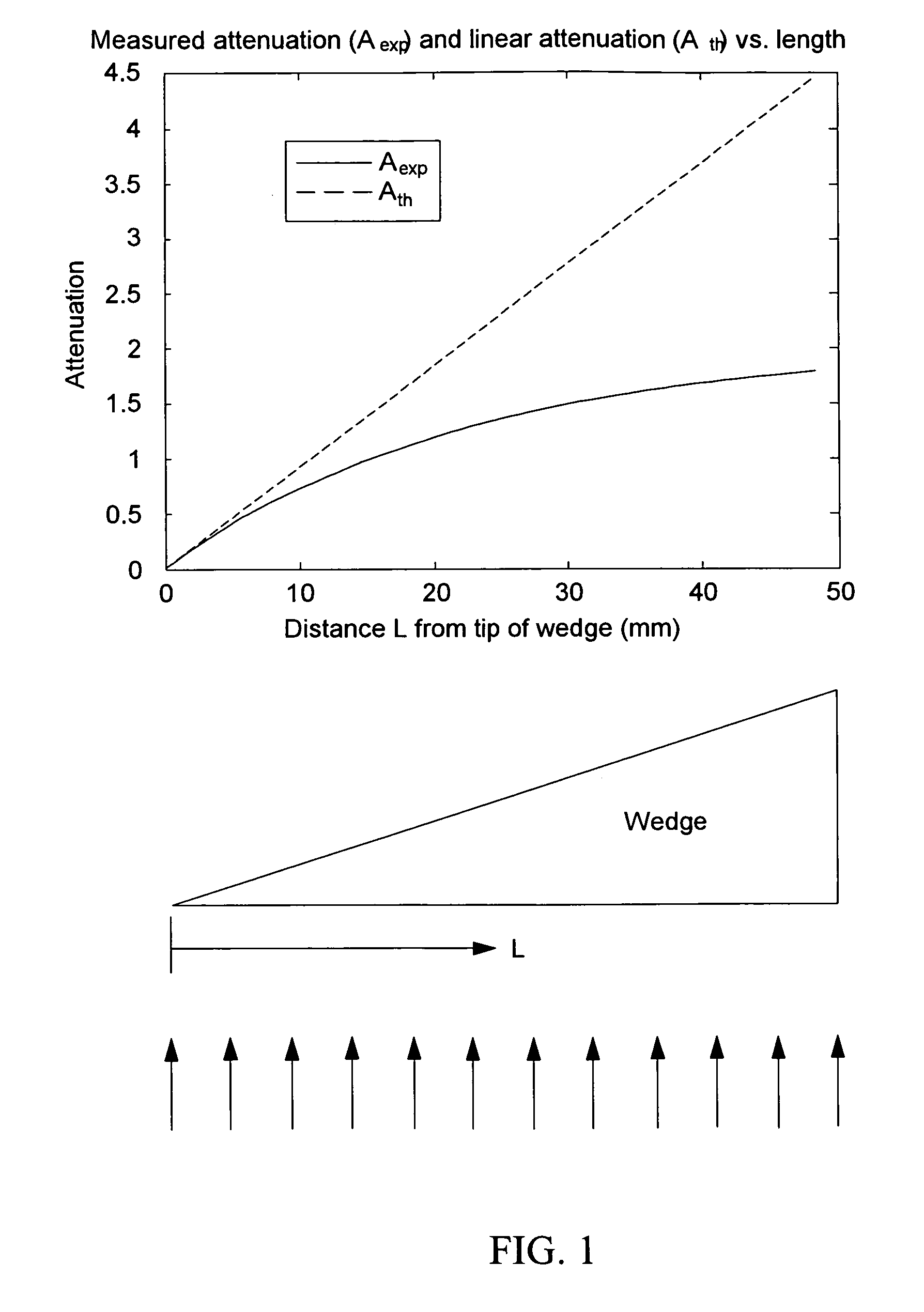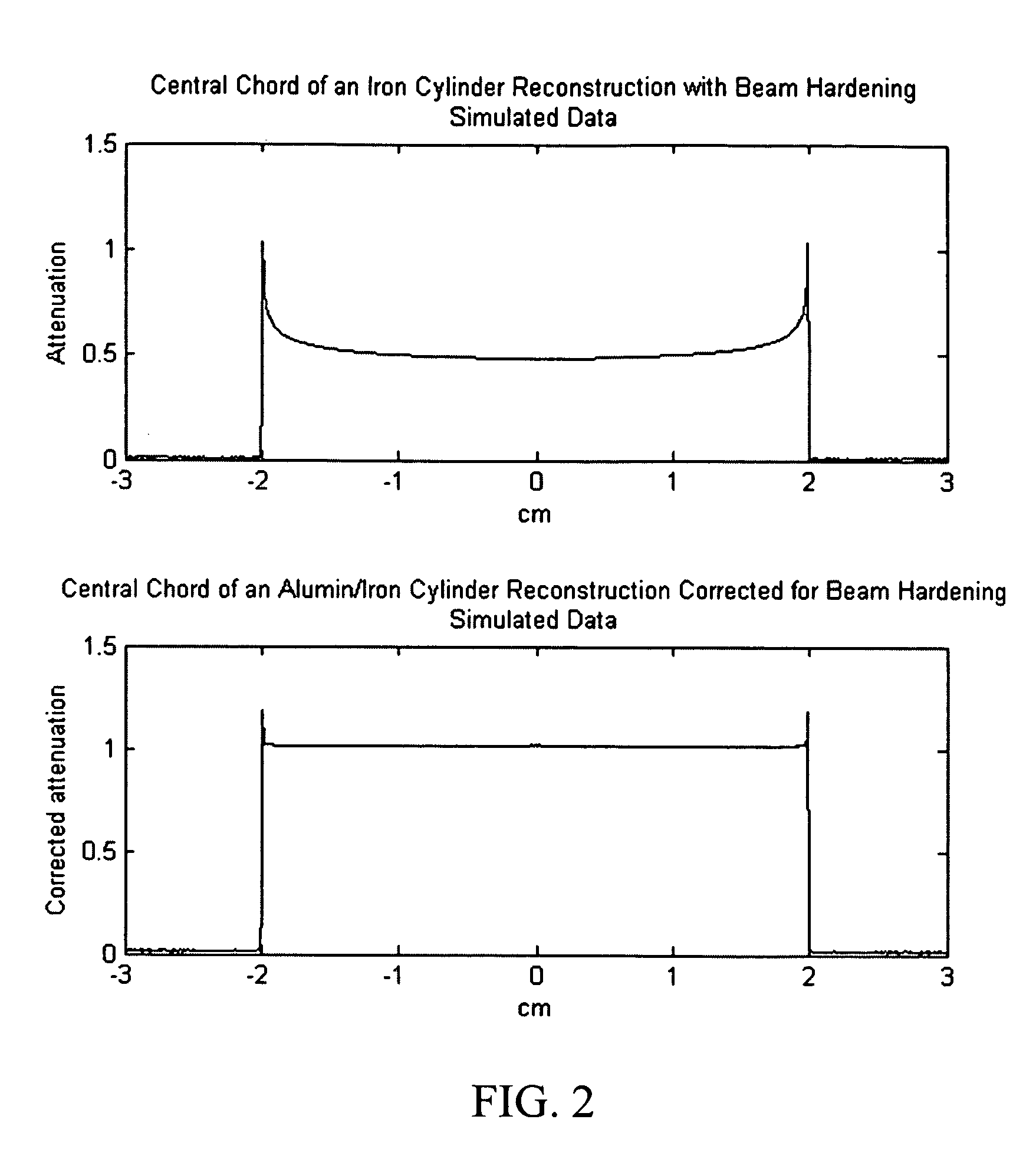Flat panel X-ray detector with reduced internal scattering for improved attenuation accuracy and dynamic range
a x-ray detector and flat panel technology, applied in the field of flat panel x-ray detectors, can solve the problems of significant scattering caused by dense cfc sheets, and achieve the effect of reducing the fpd scatter significantly
- Summary
- Abstract
- Description
- Claims
- Application Information
AI Technical Summary
Benefits of technology
Problems solved by technology
Method used
Image
Examples
examples
[0093]A low-Z sandwich structure was used comprising CFC skins each 0.011 inch thick surrounding a 0.060 inch Rohacell (polymethacrylimide) foam core. X-ray scattering measurements were made comparing the performance of the above low-Z sandwich structure to that with a standard aluminum housing, a 0.1 inch thick solid CFC sheet, a 0.060 inch thick solid CFC sheet, and without any housing. Although scattering was reduced through use of the solid CFC sheets as compared to the aluminum housing, the low-Z sandwich structure showed reduced scattering comparable to that with the housing being removed.
PUM
 Login to View More
Login to View More Abstract
Description
Claims
Application Information
 Login to View More
Login to View More - R&D
- Intellectual Property
- Life Sciences
- Materials
- Tech Scout
- Unparalleled Data Quality
- Higher Quality Content
- 60% Fewer Hallucinations
Browse by: Latest US Patents, China's latest patents, Technical Efficacy Thesaurus, Application Domain, Technology Topic, Popular Technical Reports.
© 2025 PatSnap. All rights reserved.Legal|Privacy policy|Modern Slavery Act Transparency Statement|Sitemap|About US| Contact US: help@patsnap.com



